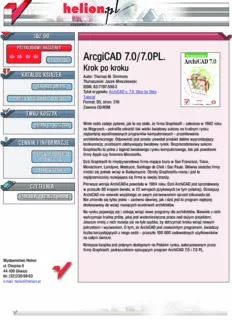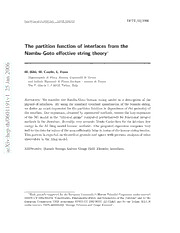
Словарь терминов спутникового телевидения - English PDF
Preview Словарь терминов спутникового телевидения - English
СЛОВАРЬ ТЕРМИНОВ спутникового телевидения English Санкт-Петербург, 2013 1 А ACS number - the version number of the cards software. There are several different software versions: 1.2, 1.4, 1.6 en 3.82, 3.83. Versions 1.4 and 1.6 are almost identical. Alphacrypt - the Irdeto successor, decodes both Irdeto and Betacrypt. Asciiserial - the number that identifies the card. It is also printed on the card in bar-code. It only serves identification purposes. Aston Seca - Although the real name for the coding system is Mediaguard, it is often referred to as Seca or Aston Seca. Mediaguard is developed by Seca, so the also used name Seca Mediaguard is more suitable. Aston is the company that builds the CAM's (among others) that are used to decode the Mediaguard system. The Seca Mediaguard coding is used by the Canal + organization which is no wonder. Canal + is shareholder in the Seca organization and it also takes part in the development of the Mediaguard coding system. Because of the influence of Canal +, the Seca Mediaguard system is very popular in France. ATR - Answer To Reset, or ATR for short, is the string a smart card sends to the receiver upon every reset. The ATR of each smart card conforms to the ISO7816-3 specifications. The ATR contains information about the card, for instance information on how the receiver should communicate with the card: Voltage, Amp, Baudrate, Synchronous or Asynchronous communication etc. Auto Update - The auto update (AU) technique makes sure the card is kept up to date in order to provide the correct keys to the CAM when requested. Providers will regularly change their operational keys and unless you have a valid set of management keys, you will soon be left with a black screen. For different coding systems, the actual keys that are used for decoding, have different names. For instance, in Irdeto they are called Plainkeys and for Seca they are called Operational Keys. ASIC - an "application specific IC". Any IC (integrated chip) that is made especially for an application, is called "an ASIC". There are application specific chips in phone cards, in wrist watches, and in the official cards, etc. Atmel card - see Funcard. 2 ATR protocol - "answer to reset" T=0 ISO-7816 - the way smartcards communicate. Almost all smartcards use this protocol or some variation of it, when they operate. For example phone cards, satellite TV cards, pirate cards, etc. A "smartmouse interface" (standard smartcard interface) communicate using this protocol. Note that when PIC cards are programmed, this programming does not follow this ISO protocol. Auto-updating cards - see "Self-updating cards". B Betacrypt - acoding system very similar to Irdeto and used by the German provider Premiere World. Blocker - every now and then, some providers will send signals that will effect pirate cards only. The intention of these signals is to disable pirate cards. In order to make sure these unwanted signals don't reach and disable your card, you can use a blocker. There are 2 ways to block signals: software- and hardware-blockers. Bootloader - a bootloader is the first program, executed whenever you turn your receiver on. The bootloader will ensure that the receivers operating system is started. The operating system of a satellite receiver is usually called the firmware. C C1, C2, C3, C4, C5, C6, C7, C8 - the names of the terminals on any ISO-7816-compatible smartcard. Countrycode - a 3 digit code, used to inform the CAM/receiver which group of channels should be validated. Chip - black electronic thing with pins on it. It consists of a photographically P- and N- doped etched semiconductor wafer connected to pins, and everything moulded into black resin (plastic). A "wafer card" consists of the wafer and a gold pad glued to it (with some gold bondings (threads) in between). Card doubler - a device that enables you to use 2 cards in 1 CAM simultaneously. CB20 selection - a smart card can be addressed and modified in 3 ways: 1. By using the hex serial, individual cards can be addressed 2. Through the card group number, all 256 cards in that group can be addressed simultaneously 3 3. Within a card group a selection of individual cards can be addressed by means of a CB20 selection (max. 256 cards) Channel ID - Is used to select a channel. The correct combination of key and channel ID will activate the key. Common Interface - Common Interface (CI) is a PCMCIA slot in the satellite receiver in which CAM's can be put. All multicrypt receivers use Common Interfaces. Common Scrambling Algorithm - this is the coding algorithm as specified by DVB. The CSA was designed to make transmitted signals safe from hackers. For the provider the real advantage is that CSA is universal to several types of CAM's. This means that a provider who for instance broadcasts in both Seca and Viaccess, can send EMM's and ECM's with the transmission, but each CAM will only react to the commands which are meant for that CAM. All other commands are ignored. Conditional Access - Conditional Access (CA) is a technology, used for coding and authorizing in DVB systems. A Conditional Access system contains a few basic elements: SMS and SAS. Conditional Access Module - a Conditional Access Module (CAM) is the module into which the CA system is built in. CAM's can be found as separate modules to put into the CI of your receiver, but they are also sometimes built fix into the receiver. In that case they are called embedded CAM. The CAM contains all software, needed to decode a certain scrambling system and also the necessary software to enable it to communicate with your smart card. Control Word - a Control Word (CW) is a data package containing the coded key for the coding algorithm of your smart card. Crd's - You can regard Crd files as a kind of macro files. They contain command strings, used to update your smart card. Cryptedkey (Key) & Plainkey - These are respectively a coded and a uncoded form of the same key. To make things even more complicated than they already are, the cryptedkey is often simply referred to as key. The cryptedkey contains a combination of the date, that key was sent, the plainkey and the Plainmasterkey, all coded into 1 key. The cryptedkey is sent to the card on a regular basis. It validates the subscription of the user, therewith enabling the user to view certain channels. The cryptedkey ensures correct decoding of a validated channel. The plainkey is the uncoded version of the cryptedkey. Crypto Works - a relative newcomer among the coding systems is Crypto Works. This system is developed by the Dutch based Philips. 4 Customer Word Pointer - the 4th byte in the PPUA string is called the CWP (or Customer Word Pointer). It is used to address individual cards. The CWP is used only in MOSC cards. D Date - the date on a card is used by the provider to activate or deactivate channels. Data logger - a device that logs the data between a smartcard reader and a smartcard, in both directions, and sends it to the serial port of a PC. See also Smartmouse (which allows communication between RS-232 and a smartcard) and Season (which allows communication between RS-232 and a smartcard reader). DES - the 56-bit encryption algorithm used in the Eurocrypt system. DIL-chip - chip with two rows of easy-to-solder pins that goes through the circuit-board, rather than the small surface-soldered SMD-chips (or SOIC). DIL stands for Dual In-Line package. See also SMD. Direct programming lines - If the eeprom on a card is directly connected to the cards contacts, then the eeprom can be programmed independently from the processor. When this is the case, those direct connections are called the direct programming lines. You will find DPL on SMD or HMD cards only. Goldwafers don't utilize DPL and will therefor always need a loader file in the processor chip in order to program the eeprom on the card. DPSC - Digital Pirate Satellite Card. These cards are sold with working keys. Prices can be up to several hundreds of Euros for multiprovider cards. Usually these cards contain a sort of timing routine which ensures that the cards are disabled after a certain period of use. But these cards will also be closed by provider attacks through the use of ECM's. DVB - Digital Video Broadcasting, or digital satellite TV. (DVBs) E Encryption algorithm - a way to scramble information and make it unaccessable to anybody that doesn't know the number ("key") on which it is based. For example, if I encrypt HELLO by adding each letter with 1, I get IFMMP. Adding each letter with 1 is then the encryption algorithm. Of course, most encryption algorithms are much more complex than that. EEPROM - a type of computer memory - "electrically erasable & programmable ROM". The data memory inside the single-chip computer PIC16c84 is of this type. The memory chip 24LC16 uses memory of an EEPROM type. EEPROM memory keeps the contents after the power is turned off (unlike the RAM work memory in a computer). But it can also be 5 reprogrammed many times, unlike EPROM or ROM memory. Flash memory works in the same way as EEPROM memory but it uses a more modern technique. Sometimes people include both EEPROM and Flash memory when they say "EEPROM memory". A more correct term would be "NVRAM". ECM - Electronic Control Message. These are commands which are used to control the working of your card. ECM's are always sent as packets. Such a packet is called a Control Word (CW) and it contains coded keys, ID's etc. needed to decode the signal. In other words, the ECM identifies the service and the conditions that have to be met in order to use that service. Providers will also use fake ECM's to disable pirate cards. That is why a lot of people translate ECM as Electronic Counter Measure. EMM - Entitlement Management Messages. EMM's are composed of the information, contained in the SAS and will always be sent together with the ECM. EMM's contain information about the subscriber and the status of the subscription. They are used to transfer information about authorization, but they will also carry new keys, or modify or delete existing keys. F Funcard - a programmable smartcard sold blank, which uses an Atmel processor instead of the PIC1684 chip. File set - a file set is a complete package of software and keys, needed to program a smart card. How the file set is composed, is dependent on the type of card it is made for. For PIC cards, a file set contains 2 files (the PIC file and the eeprom file). For AVR type cards like the Fun- and Jupiter cards, the file set contains 2 or 3 files (a flash file for the processor, an external eeprom file and sometimes an internal eeprom file). Firmware - the operating system software for the receiver. H HEX file - generally a file with hexadecimal numbers. They usually end with .HEX. Program for PIC processors and contents of EEPROM chips are unfortunately by tradition stored in hexadecimal format instead of normal binary format, which makes them slightly more than twice as big as they normally would be (if a HEX file is 2200 bytes, it requires only 1024 bytes (or 8192 bits) when programmed into the chip. To make everything even more idiotic for no reason at all, HEX files can be either 8-bit (which really means 16-bit) or 16-bit (which really means 32-bit). All programming utilities understand 8-bit HEX - also called INH8M, but many also understand 16-bit HEX. 6 Hexserial - 3 byte hexadecimal number which is used by the provider to address the smart card. Hexmasterkey - a 10 byte long hexadecimal number which is coded with the hexserial. The hexmasterkey is just a code which is used by the smart card to calculate the plainmasterkey from the masterkey. Without the hexmasterkey it is not possible to correctly update the plainmasterkey. Hexadecimal - a number system with 16 digits (0123456789ABCDEF) instead of 10 (0123456789) or 2 (01). 10 equals $0A, 100 equals $64, 255 equals $FF, 256 equals $100, 65535 equals $FFFF etc. To indicate that it's a HEX number, the dollar sign is used. Communists instead use H or Ox to make things more complicated. .(See FAQ about HEX) I ISO-7816 - the international standard for smartcards, used in phone cards, satellite TV cards, GSM cards, etc. It specifies card size, durability, pin configuration, voltage levels and communication speed etc - therefore people might refer to different things when they say "ISO-7816". For example, a British phone card can be inserted in a Videocrypt decoder, and the number of units left on the card is displayed on the TV screen, thanks to the standardized communication protocol specified in ISO-7816! The way PIC chips are programmed is of course not specified in ISO-7816. See also "ATR". Impulse Pay Per View - or interactive pay per view (ippv) is an extension of ordinary ppv. You no longer will be charged for a total event, but instead you are charged for the time you spent using the service. Instructions - seca uses so called instruction bytes (INS) in order to communicate between CAM and smart card. These instructions are used for instance to request card- and provider data, authorization, ECM's and EMM's etc. Irdeto - an organization, founded by Ir. den Toonder (hence the name). This organization develops systems for secure data distribution like ppv (pay per view) and ippv (impulse pay per view). The most well known providers that use Irdeto for their transmissions, are Premiere World, Canal +, Stream and Nova. K Key - a secret number on which the encryption algorithm is based. 7 L LNB - the thing in the middle of the satellite dish, receiving the signals from the satellites. The dish reflects and focuses these signals right onto the LNB. Logging - the process of recording the information contained in the data stream between CAM and smart card. The data stream contains, among others, the keys that are used by the provider to manipulate the card. M Man key - short for Management Key - Administration Key - a special "master key" by which the other keys are encrypted. Memory - all computer memories consists of a number of memory locations. Each memory location can hold a value between 0 and 255 if the memory is a traditional 8-bit memory (2^8=256). Internally it is made out of of 8 bits that can be either 0 (power off) or 1 (power on) - hence the 256 different combinations. (Sometimes, modern computer programs may interpret many bytes at the time, for example 16 or 32 bits at the time instead of. MPEG - motion JPEG, a compression method to describe a changing image (like a TV image) with as little information as possible. MPEG-3 (or MP3) is the MPEG method of compressing audio. ZIP is another compression method, but it's general for any type of data, unlike MPEG which is specialized to be efficient on moving images (and MP3 for audio). PAL TV consists of 24 frames per second, and sometimes MPEG doesn't describe the full frame, but instead only describes what has changed between two similar frames! With MPEG, an incredible compression ratio of 2000% or better can be achieved on moving images - the more European the film is, the better the compression. Ordinary picture compression techniques are also used - it's based on JPEG which is a lossy (meaning you loose some of the information in the picture compared to before the compression, but of course you can compensate for that by using a better resolution to start with) compression technique for steady images. Since MPEG is a computer-based compression method, it can of course only be used on digitally broadcast TV channels. With digital TV, 20 channels transmit on the same transponder/frequency thanks to MPEG2! (Many people think MPEG2 is a TV format such as PAL, D2MAC or NTSC, but it's not. It's used in many different digital TV formats) Masterkey & Plainmasterkey - the coded, respectively uncoded 8 byte key, used to trigger certain card functions like "opening" the card. The Masterkey can be calculated from the sum of the hexserial and the provider group. So the mathematical formula is simply: hexserial + provider group = masterkey. The Masterkey is also sometimes referred to as Key00. Whenever the Masterkey is written to 8 the card, that is done uncoded (the plainmasterkey). The plainmasterkey is necessary for further processing of the key- and channel information. MOSC - Modified Original Smart Card. These are the original provider supplied smart cards. Multicrypt - Multicrypt receivers are universal receivers that utilize common interfaces to serve as a carrier for separate CAM's. Multicrypt receivers have been developed under pressure of the market. Their flexibility lies in the possibility to host several CAM's, thus enabling them to accommodate multiple coding systems. О Original cards - original cards are of course cards that are issued by the channel to the subscribers. P PAL - the TV system used in Europe. In America, NTSC is used. PCB - printed circuit board (i.e. the card itself, on which you solder the chips) Phoenix interface - a device with the exact same functionality as a smartmouse, but not smartmouse-compatible. Originally used to re-activate a certain version of the original Sky cards (hence the name). Processor - the main part or "brain" of a computer. It reads a program stored in a memory, and does what it says in there. It can calculate mathematically, create electronic signals on it's pins,and change the contents of memory locations. Program - a sequence of numbers (ranging between 0 and 255 if it's an 8-bit program) intended for interpretation by a processor. The program must be stored in a memory, so the processor can read and execute it. In microcontrollers, the program is stored in ROM (if the chip is OTP) or EEPROM memory. Each number represents an instruction for the processor, for example 4, 120, 84,44 may mean "divide the contents of memory cell 120 by 84 and put the result in memory location 44". Programs are processor specific, so a program for a PC-processor can't be understood by a PIC-processor or a MacIntosh processor (i.e. Motorola processor). However, if the programming language is compiling, the same source code can be used to both a PC and a MacIntosh version. 9 Pay Per View - (ppv) as the name implies, is a technique, used to charge a viewer only for the program he/she watches. So with ppv, whenever you want to watch a movie or sport match, you will pay for that program only. PPUA - Program Provider User Address is a 4 byte long code, composed of 2 separate codes. The first 3 bytes of the PPUA are called the Shared Address, the last byte of the PPUA is the Customer Word Pointer. The PPUA is used to identify and address cards. Provider Group & Provider ID - a 3 byte hexadecimal number to identify a card. The first 2 bytes identify the Provider Group, the 3rd byte is the Provider ID and is either 00 or 10. So only 2 different ID's are used. Most providers are addressed using Provider ID 00. One exception is German Provider Premiere World who uses Provider ID 10. R RB6, RB7 etc - names on the different I/O pins on the PIC1684 chip. The programmer and the PCB needs to be ready for to the "RB" or "I/O-pin" that the PIC program is made for. S Season interface - an interface that enables communication between an ISO-7816 card slot and the RS-232 serial port in a computer. WallBanger is a PC program that uses a Season interface to decrypt TV channels. Secure microcontrollers - microcontrollers that withstand a hacker's attempts to extract the Program Code which has been programmed into it. Self-updating cards - cards that don't need to be updated when a channel changes a key. A card can be autoupdating on all or just some channels. The autoupdating feature comes from the fact that one of the management keys is programmed into the card. Knowing this, the card can itself calculate the new update code without much processing power. NOTE! It is possible that the TV company finds the management key and "kills" (stops using) it. In such case, the autoupdating card using this man key, may stop working. Autoupdating HEX files are normally not publically. The reason for secrecy is that if the TV company found out which management keys are known, they can kill it. And the management key can easily be extracted from anyone that holds the HEX file, since HEX files are commonly not encrypted Smartmouse interface - an interface used so a PC can communicate with a smartcard (rather than programming a PIC card). Smartmouse interfaces are used to communicate with standard ATR-smartcards, and can also be used to program the 2416 chip on cards, if no PIC-programmer able to program this chip is available. Smartmouse interfaces are good for 10
The list of books you might like

Haunting Adeline

The 48 Laws of Power

Can’t Hurt Me: Master Your Mind and Defy the Odds

Believe Me
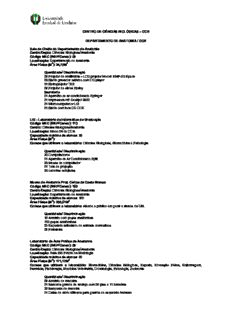
CENTRO DE CIÊNCIAS BIOLÓGICAS – CCB DEPARTAMENTO DE ANATOMIA / CCB Sala da
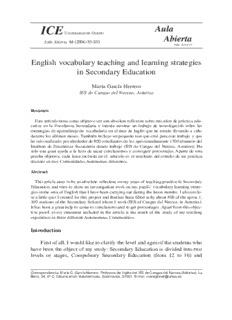
Aula Abierta - Dialnet

Receiving Love: Transform Your Relationship by Letting Yourself Be Loved
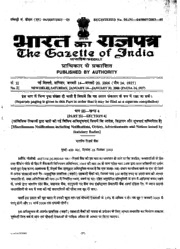
Gazette of India, 2006, No. 42
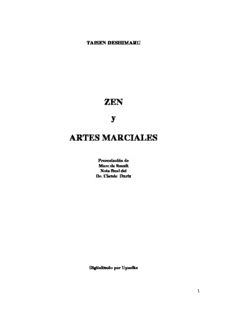
ZEN y ARTES MARCIALES
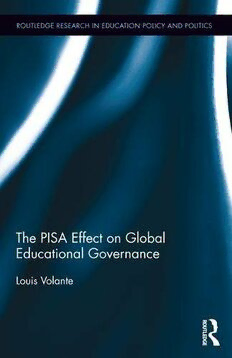
The PISA Effect on Global Educational Governance
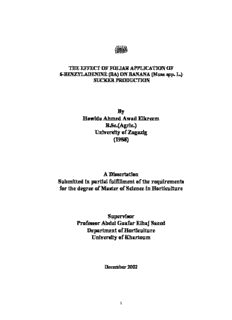
By Howida Ahmed Awad Elkreem B.Sc.(Agric.)
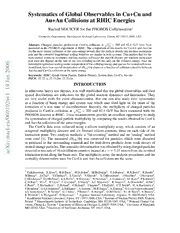
Systematics of Global Observables in Cu+Cu and Au+Au Collisions at RHIC Energies
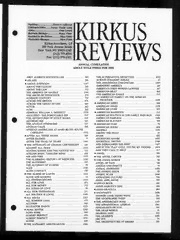
Kirkus Reviews 1993: Vol 62 Index
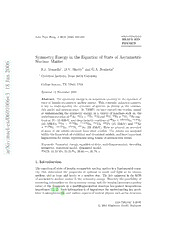
Symmetry Energy in the Equation of State of Asymmetric Nuclear Matte
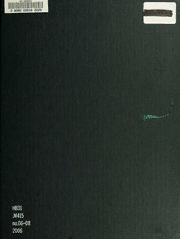
Technology, information and the decentralization of the firm
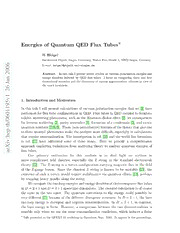
Energies of Quantum QED Flux Tubes
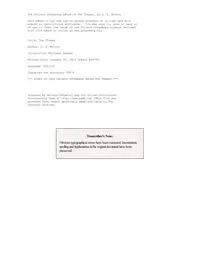
The Thames by Mortimer Menpes
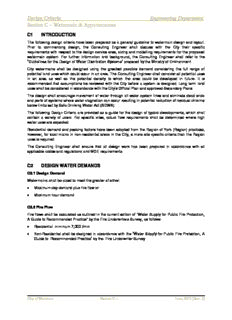
C - Watermain & Appurtenances
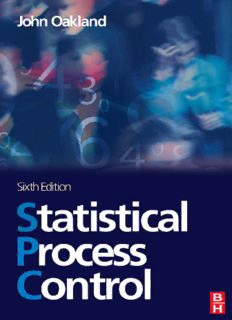
Statistical process control
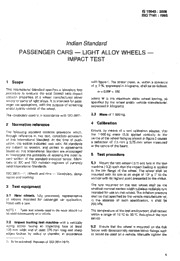
IS 15645: Passenger cars - Light alloy wheels - Impact test

IS 15725: Automotive tyres - Tyre curing envelop - Cold process
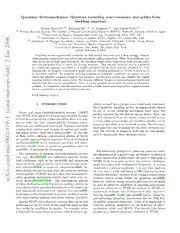
Quantum electromechanics: Quantum tunneling near resonance and qubits from buckling nanobars
